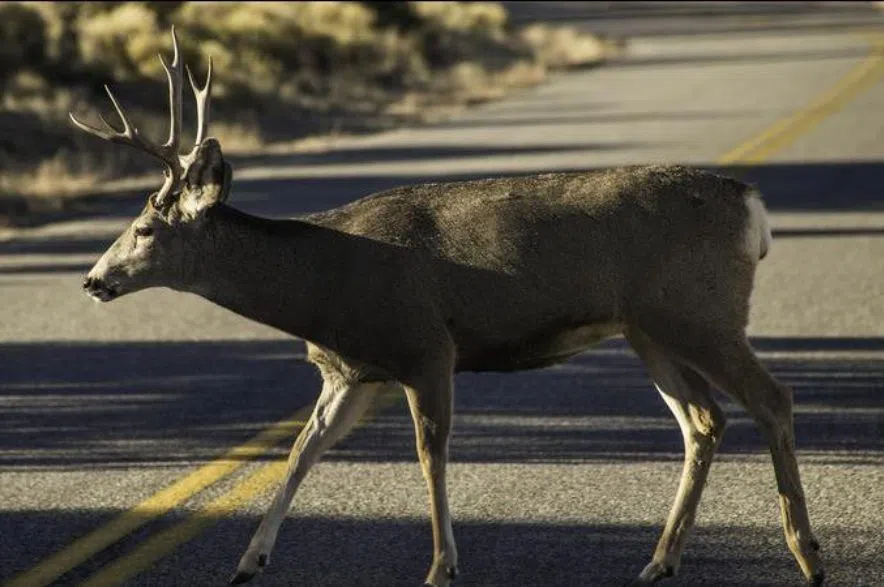Saskatchewan motorists are reminded to give wildlife a brake during peak activity season.
According to the most recent data from SGI, each year there are more than 8,000 collisions involving wildlife on Saskatchewan roads. On average, about 400 people are injured and two people are killed annually in animal-related collisions.
Read more:
- Sask. adds elk hunting opportunity in effort to limit crop damage
- Elk, bear populations on the rise, mule deer decreasing from CWD for hunting season
- Sask. RCMP warns motorists after five moose-related collisions in half hour span
Last year, there were 9,053 collisions reported, including 8,683 property damage-only incidents, 366 injury collisions, and four fatal collisions. This resulted in 443 injuries and five fatalities in Saskatchewan.
Todd Smith, executive director for the Saskatchewan Wildlife Federation, said at this point in the season moose, deer, and elk are most active.
“It’s reproductive season. So, dawn and dusk are when they tend to be most active. But at this time of year, it could be any time of day or night,” Smith said.
Smith said it is important for motorists to pay attention and stay alert.
“Use your headlights effectively and be sure to be looking in the ditches in and along the roadways for animals. If one does cross in front of you, it’s likely not to be alone. There are likely to be others,” he said.
Maintaining a three-second following distance when driving is also recommended to give yourself extra time to react when other drivers do something unexpected. When road conditions are not ideal with reduced visibility, the following distance should be doubled to six seconds.
In some cases, preventing a collision with wildlife is unavoidable even if all the necessary precautions are taken.
Heather Hubic, manager of media relations for SGI, said there is some advice drivers should follow when they are about to hit an animal.
“You should aim your vehicle at the spot where the animal came from, not where it’s going. Also avoid swerving. Hitting an animal is sometimes the better option, and that’s because swerving can cause you to turn into oncoming traffic or potentially even roll into the ditch,” Hubic said.
Following the collision, the driver should pull over to the shoulder of the roadway and turn on hazard lights.
If there are any injuries or significant damage to the vehicle, SGI encourages the driver to call the police. If vehicle damage is less severe, the motorist can continue driving and then follow SGI’s regular protocol to report a claim.
The driver should not approach a wounded animal as it can become dangerous. Instead, the driver is encouraged to call the conservation office.
Read more:











